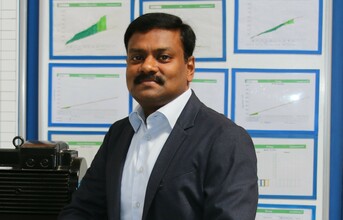
Why is sustainability and working towards a circular economy more important now than it ever was?
India has undergone rapid industrialization, economic prosperity and population growth in the last few decades. Estimates say that from 2005-15 when the country witnessed an average growth of GDP of 7-8 per cent, 11 states reported a decline in their natural capital. The country's growth came at a price in the form of deforestation, contaminated water resources, polluted air among a host of other factors.
Moving towards a circular economy, will help us incorporate the principles of Reduce, Reuse and Recycle to design business models that strategize resource recovery after end of lifecycle. This will aid in sustainable growth and sustainable living without over dependence on existing natural resources for fulfilling the demands of our economic growth.
At Grundfos, our take-back programme allows us to improve the water and climate impact through reuse, remanufacturing and recycling of materials and components. This allows us to improve the water and climate impact through reuse, remanufacturing and recycling of materials and components. The strategy is to refurbish and remanufacture to keep materials in the loop, thus they will not disappear in waste and landfill and be burned. The smaller the loop, the less climate impact and water we use.
How can technology and moving towards digitization help in achieving sustainability goals?
Today, digital solutions that use Internet of Things (IoT), ML, Cloud are the foundation towards adoption of sustainable goals aided by technology. These cutting-edge technologies have enabled real-time monitoring of pumps that has led to remote control, system optimization and predictive maintenance to achieve the highest level of performance and savings, both in cost and energy. Organizations need to ensure that adoption of technology helps in achieving sustainability goals by helping them cutting down on their carbon and water footprint.
For instance, we have entered into a strategic collaboration with Siemens to harness the power of digitalization for solving the world's water and climate challenges. Siemens and Grundfos are combining the competences of both companies to support customers in their digital transformation and in the implementation of intelligent solutions. Digital Enterprise portfolio and IoT solutions can optimize pump and motor schedules to maximize uptime and minimize energy consumption.
How is your company working towards contributing to the environment?
Sustainability is in our DNA and is at the core of Grundfos' principles, dictating how we do business. We implement principles of sustainability into our products and solutions, aligning with the United Nation's Sustainability Development Goals (SDG) 6 which aims to improve sanitation and access to clean water and SDG 13 on climate action. For SDG #6, our current ambition is to halve our own water withdrawal by 2025, compared to the 2008 baseline. For SDG #13, we want to halve our own CO₂ emissions by 2025 compared to 2008 baseline. As an organization, we aim to be "climate-positive" By 2030.
